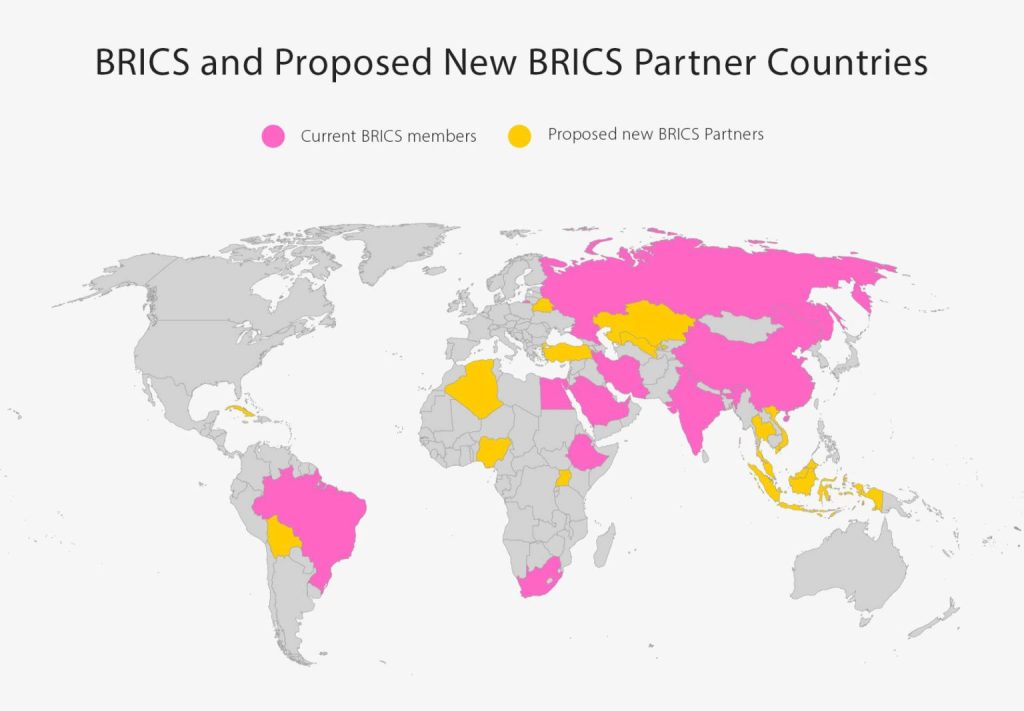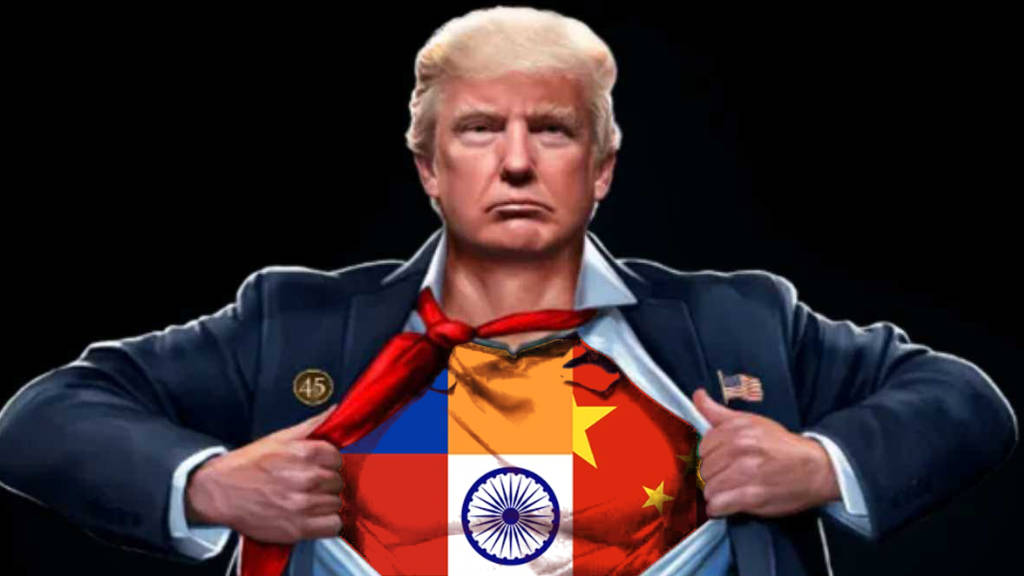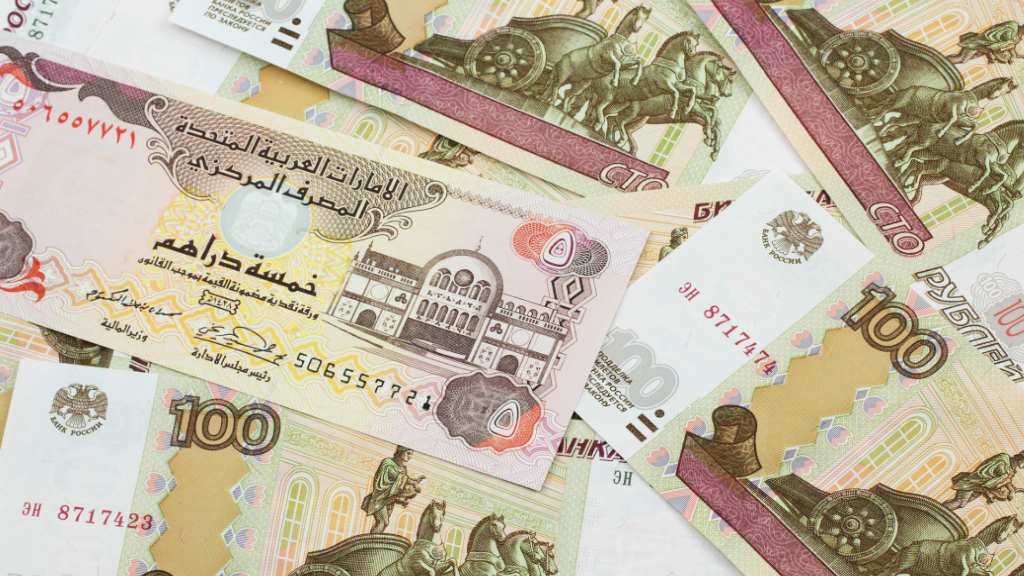Part Three – The United States and BRICS
With Donald Trump about to become the 47th President of the United States, we look at the various issues his presidency is likely to impact Russia, including Ukraine, sanctions, security, tariffs, trade, and BRICS. In Part Three, we look at the implications for the United States’ likely attitude towards BRICS. Part One, which dealt with conflict resolution, can be accessed here and Part Two, which covered sanctions, tariffs, nuclear weapons security, and trade, can be accessed here.
Trump and BRICS
On the face of it, Donald Trump is not a fan of BRICS. This is mainly due to two reasons, firstly an overstated US position that somehow the group is anti-American, and secondly, that the BRICS group is ushering in de-dollarisation, which is correct. In response, Trump has previously said that he will sanction ‘any country’ that attempts to use non-US dollar alternatives. So where does this leave the BRICS?
Understanding BRICS Today
The BRICS as is, currently includes members Brazil, Russia, India, China, and South Africa, while Egypt, Ethiopia, Iran, and the UAE all joined from January this year. Saudi Arabia has not yet ratified its proposed membership, yet takes part in BRICS events, Riyadh will probably want to see the outcome of the Middle East crisis before sitting down at a membership table that also includes Iran.
In addition to these countries, at last month’s 2024 BRICS Heads of State summit, a further 13 countries were admitted as “BRICS Partners” – pending full membership, which is expected to be individually processed during 2025. These include Algeria, Belarus, Bolivia, Cuba, Indonesia, Kazakhstan, Malaysia, Nigeria, Thailand, Turkiye, Uganda, Uzbekistan, and Vietnam.

These potential new ‘BRICS Partners’ would change the overall BRICS dynamics in terms of global influence. Should the 13 BRICS Partners all join as full members, this expanded BRICS would account for just under 43% of global GDP, compared with the G7’s 30%. In population terms, the new BRICS would account for about 57% of the total global population, as opposed to 10% for the G7.
In terms of simple demographics, the emergence of what may become the world’s largest multilateral organisation will start to make multiple countries think about the developing, new geopolitical dynamics and the implications. This includes the United States.
In terms of BRICS policy, it is not, as has been described by NATO, a military threat. The BRICS is a trade group, open to all – except countries that engage in the issuing of sanctions against its members. Collectively, as can be seen in the 2024 BRICS Kazan Declaration the BRICS also calls for reform within the United Nations, which may not fit in with US objectives, although Trump is not a great fan of the UN either. The BRICS also categorically state that they will resist “Western hegemony” and will actively seek alternatives to the US dollar. Neither of those objectives will fit with Trump.
United States-BRICS Trade
The trade turnover between the United States and the BRICS nations at about US$850 billion in 2023, although roughly 2/3 of that was with China. If we add the new BRICS Partners into the equation, this figure would rise to about US$1.26 trillion.
This is a significantly large – and diverse trade figure – to dissuade Trump from doing anything immediately rash. The United States is now in a blind spot in that they are unaware of any potential BRICS trade response if blanket tariffs were to be imposed on the collective group for pursuing a de-dollarisation agenda. It could be possible, but only after a strategic reset within US trade policy influencers to fully understand the implications of a punitive action against the BRICS. They will want to avoid the self-inflicted fiscal damage the EU caused itself for example, by imposing poorly thought sanctions on Russia.
In addition, there are other influences. The new Trump administration can be expected to include Elon Musk, probably in some type of trade capacity. Musk has Tesla factories in China and wants into the India market as well. He also has his eyes on Tesla sales to emerging markets such as Brazil (which imports them from the United States) in addition to the broader Middle Eastern and Southeast Asian markets. Musk will not want to see sanctions get in the way of Tesla’s expansion. That also creates issues for Trump as Tesla is the cash cow that helps fund SpaceX – a key component of US military and communications ambitions.
This suggests that solutions may need to be found in terms of how Trump handles the BRICS. While there is no question of the United States joining, it is feasible that Trump could participate in a future BRICS annual summit as a Guest. That would accomplish two aims. First, a greater understanding of what the BRICS is – and secondly, an opportunity to be seen with World Leaders he admires. At no other event – bar the G20 – could Trump be seen with the likes of Modi, Xi, and many others (and possibly even Putin). That would be quite a coup both for him and for the BRICS group as they attempt to ward off sanctions or tariff trade winds.
But there is another solution. Trump has already stated he wants to be known as the ‘Bitcoin President’ and endorses the concept of the digital Dollar. While he may not want to see non-dollar alternative financial systems develop, he may be amenable to including the Digital Dollar as part of an alternative payment system that would also include the Chinese RMB amongst others. That would help spread the cost of the US having to develop and roll out a US digital Dollar technology alone and would spread the operational risk. While the Ruble would probably not be part of this, other currencies such as the Euro, Indian Rupee, Brazilian Real, and Saudi Riyal could be. That would connect the United States indirectly to BRICS, and help sustain US dollar trade with these powerful alternative economies a while longer.
The essence of Trump is that he is highly competitive, and a businessman at heart. As he said, his expertise lies in “the art of the deal”, and we suspect he may come up with some original solutions to allow the US to trade with BRICS without having to confront it.
Further Reading
The US Rules Based 2024 Presidential Election Order Compared With China, Russia, and the BRICS





